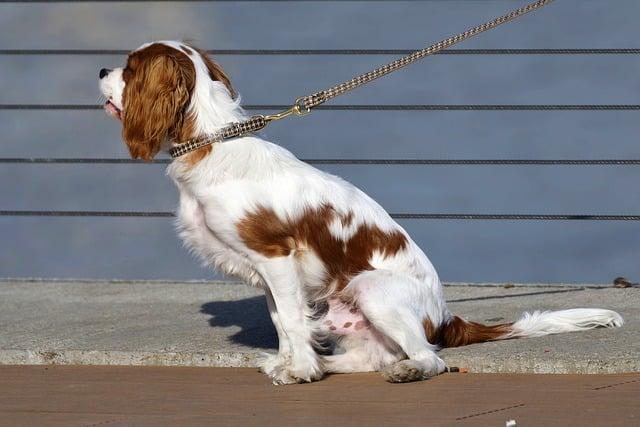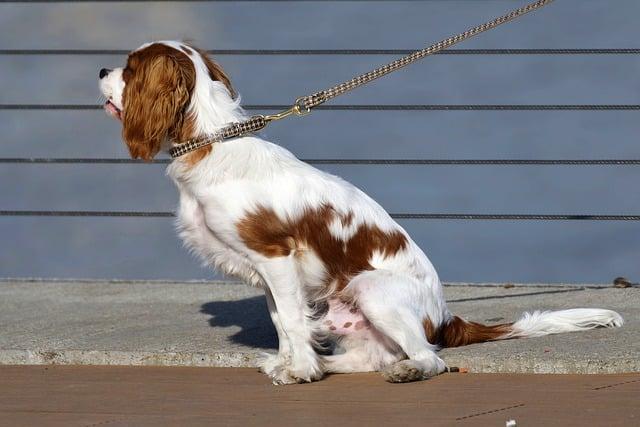When Max, a spirited German Shepherd, lunged at a neighbor, his owner Sarah felt a wave of panic. Determined to change his aggressive behavior, she sought professional help. Through consistent training, positive reinforcement, and understanding Max’s triggers, Sarah transformed their relationship. Instead of fear, she fostered trust. Now, Max greets visitors with a wagging tail, proving that discipline rooted in love and patience can reshape even the most challenging behaviors. Remember, aggression can be managed—start today for a harmonious bond!
Contents
- Understanding the Root Causes of Aggression in Dogs
- Effective Communication Techniques for Modifying Aggressive Behavior
- Implementing Positive Reinforcement Strategies for Lasting Change
- Creating a Safe and Structured Environment for Your Dogs Development
- Q&A
Understanding the Root Causes of Aggression in Dogs
Understanding the underlying factors that contribute to aggressive behavior in dogs is crucial for effective discipline. Aggression can stem from a variety of sources, including fear, territorial instincts, and lack of socialization. Recognizing these root causes allows pet owners to address the behavior more effectively rather than simply reacting to it. By identifying the triggers, you can create a tailored approach that not only curbs aggression but also fosters a healthier relationship with your dog.
One common cause of aggression is fear. Dogs that feel threatened may resort to aggressive behavior as a defense mechanism. This can be due to past trauma, lack of exposure to different environments, or even genetic predispositions. To mitigate fear-based aggression, it is essential to provide a safe space for your dog and gradually expose them to new experiences in a controlled manner. **Positive reinforcement** techniques can help build their confidence and reduce their fear responses over time.
Another significant factor is territoriality. Many dogs exhibit aggressive behavior when they perceive their home or family as being threatened. This instinct can be heightened in certain breeds or individual dogs with strong protective instincts. To manage territorial aggression, it is vital to establish clear boundaries and rules within the home. **Consistent training** and socialization with other dogs and people can help your dog learn appropriate behaviors and reduce their need to defend their territory aggressively.
Lastly, lack of socialization plays a pivotal role in aggressive tendencies. Dogs that have not been adequately socialized may struggle to interact appropriately with other animals and humans, leading to misunderstandings and aggressive encounters. To combat this, it is essential to expose your dog to various social situations from an early age. **Enrolling in obedience classes** or arranging playdates with well-behaved dogs can provide valuable experiences that teach your dog how to interact positively, ultimately decreasing aggressive behavior.
Effective Communication Techniques for Modifying Aggressive Behavior
Understanding the nuances of canine communication is essential when addressing aggressive behavior. Dogs, like humans, have their own ways of expressing discomfort or fear. By observing their body language, you can identify signs of aggression before they escalate. Look for cues such as a stiff posture, raised hackles, or a low growl. Recognizing these signals allows you to intervene early and redirect their focus, preventing potential confrontations.
Utilizing positive reinforcement is a powerful tool in modifying aggressive behavior. Instead of punishing your dog for aggressive actions, reward them for calm and relaxed behavior. This can be achieved through treats, praise, or playtime. For instance, if your dog remains calm when encountering another dog, immediately offer a treat or verbal praise. This reinforces the idea that good behavior leads to positive outcomes, encouraging them to repeat those actions in the future.
Consistency is key in any training regimen. Establish clear rules and boundaries for your dog, and ensure that all family members are on the same page. If one person allows certain behaviors while another corrects them, it can create confusion and exacerbate aggression. Use the same commands and signals consistently, and practice them regularly to reinforce your dog’s understanding of what is expected.
consider the environment in which your dog is trained. A calm and controlled setting can significantly impact your dog’s ability to learn and adapt. Avoid overwhelming situations that may trigger aggressive responses, and gradually introduce your dog to new experiences at their own pace. By creating a positive and secure environment, you can help your dog feel more at ease, ultimately reducing aggressive tendencies and fostering better behavior.
Implementing Positive Reinforcement Strategies for Lasting Change
When addressing aggression in dogs, it’s essential to focus on positive reinforcement strategies that encourage desirable behaviors rather than solely punishing negative ones. By rewarding your dog for calm and non-aggressive behavior, you can create a more harmonious environment and foster trust between you and your pet. This approach not only helps in modifying behavior but also strengthens your bond.
To effectively implement positive reinforcement, consider the following techniques:
- Use Treats Wisely: Offer high-value treats when your dog displays calm behavior in situations that typically trigger aggression. This could be during walks, when encountering other dogs, or when meeting new people.
- Verbal Praise: Accompany treats with enthusiastic verbal praise. Your tone should convey excitement and approval, reinforcing the idea that good behavior leads to positive outcomes.
- Clicker Training: Utilize a clicker to mark the exact moment your dog behaves appropriately. This method provides clear communication and helps your dog understand which behaviors are desirable.
- Gradual Exposure: Slowly expose your dog to situations that may provoke aggression, rewarding them for remaining calm. This gradual approach helps desensitize them to triggers over time.
Consistency is key when applying these strategies. Ensure that all family members are on the same page regarding the reinforcement techniques being used. This uniformity will prevent confusion for your dog and promote a stable learning environment. Additionally, keep training sessions short and engaging to maintain your dog’s interest and enthusiasm.
Monitoring your dog’s progress is crucial. Keep a journal of their behavior changes and the effectiveness of different reinforcement strategies. Celebrate small victories, as these will motivate both you and your dog to continue working towards lasting change. Remember, the goal is to create a positive association with previously stressful situations, leading to a more relaxed and well-adjusted pet.
Creating a Safe and Structured Environment for Your Dogs Development
Establishing a safe and structured environment is crucial for your dog’s development, especially when addressing aggressive behaviors. A well-organized space allows your dog to feel secure, reducing anxiety and the likelihood of aggressive reactions. Start by creating a designated area where your dog can retreat when feeling overwhelmed. This space should be quiet, comfortable, and free from distractions, allowing your dog to relax and regain composure.
Consistency is key in reinforcing positive behaviors. Implement a routine that includes regular feeding times, exercise, and training sessions. Dogs thrive on predictability, and a structured schedule helps them understand what to expect throughout the day. Incorporate training exercises that focus on obedience and impulse control, such as sit, stay, and leave it. These commands not only promote good behavior but also strengthen the bond between you and your dog.
Positive reinforcement plays a vital role in shaping your dog’s behavior. Reward your dog with treats, praise, or playtime when they exhibit calm and non-aggressive behavior. This encourages them to repeat those behaviors in the future. Additionally, avoid using harsh punishments, as they can lead to fear and increased aggression. Instead, redirect your dog’s attention to a more appropriate behavior when they display signs of aggression.
Socialization is another essential component of a well-rounded environment. Gradually expose your dog to various people, pets, and situations to help them build confidence and learn appropriate social skills. Monitor their interactions closely and intervene if necessary to prevent any aggressive outbursts. By fostering a positive and structured environment, you empower your dog to develop into a well-adjusted companion, capable of navigating the world with confidence and calmness.
Q&A
-
What are the signs of aggression in dogs?
Recognizing the signs of aggression is crucial for effective discipline. Common indicators include:
- Growling or snarling
- Baring teeth
- Stiff body posture
- Snapping or biting
- Excessive barking
Understanding these signs allows you to address the behavior before it escalates.
-
How should I respond to my dog’s aggressive behavior?
Responding appropriately is key to managing aggression. Follow these steps:
- Stay calm and avoid yelling.
- Remove your dog from the triggering situation.
- Use positive reinforcement to reward calm behavior.
- Consult a professional trainer or behaviorist if needed.
These actions help create a safe environment for both you and your dog.
-
Is punishment effective for aggressive behavior?
Using punishment can often exacerbate aggression rather than resolve it. Instead, focus on:
- Redirecting the behavior with distractions.
- Rewarding positive actions and calmness.
- Implementing consistent training routines.
Positive reinforcement fosters trust and encourages desired behaviors.
-
When should I seek professional help for my dog’s aggression?
Professional help is advisable in the following situations:
- If your dog has bitten someone.
- If aggression is frequent and escalating.
- If you feel overwhelmed or unsafe managing the behavior.
Seeking help from a qualified trainer or behaviorist can provide tailored strategies to address aggression effectively.
addressing your dog’s aggression requires patience, consistency, and the right techniques. By implementing positive reinforcement and seeking professional guidance, you can foster a safer environment for both your pet and those around them.

大家好,我是彼得潘,專業的手法身體治療師。我喜歡探索和研究各種主題,並透過與人工智慧的合作分享專業、實用、有趣的文章。我們定期進行人工審核,以確保內容的準確性。如果您發現文章中有任何不準確的地方,請隨時與我們聯繫,我們會及時糾正。您可以透過 [email protected] 與我們聯繫。



